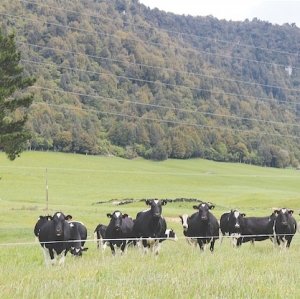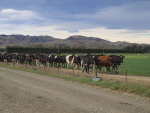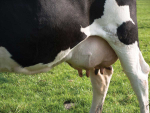UNHEALTHY ANIMALS ruin any farmer’s day. The extra time and out-of-pocket costs for treatment add up, especially as your herd grows. Most health issues your herd faces can be managed, monitored and improved through management and recording processes.
There is also a genetic percentage, about 25%, that needs watching to improve the baseline performance of your herd.
Fertility, mastitis and lameness are the top reasons a cow will leave a herd in New Zealand. Each of these animal events attracts an array of treatment costs, opportunity costs, and labour costs. DairyNZ estimates an empty cow costs the herd $500-700 in lost milk production and replacement costs to maintain the size of the herd.
Likewise with mastitis, DairyNZ estimates each season this illness costs the industry up to $280 million. If you think about your herd and the number of cases of mastitis you treat, this figure may seem too large. But a study in the US by Philpot and Nickerson shows 70-80% of the costs associated with mastitis are tied to subclinical mastitis, ie, the cases you never notice.
Finally, it comes down to simple common sense that a cow with any degree of lameness isn’t going to graze as much, limiting what she can produce due to her limited feed intake. Each case of lameness is estimated to cost the farm $300 to $1200 based on the severity.
Add up all these costs and see there is a big opportunity to gain more income from your herd performance, outside of what your BW looks like on paper. Where do you start with this challenge? Starting with your herd will ensure you have the foundation in place to capitalise on improved animal health.
Breeding for health
Depending on the part of the herd you want to improve, there are breeding values that can be selected for, to make the most improvement in your herd. Based on the largest opportunity for your herd, you should select a goal to breed for. Examples of goals include, but are not limited to, more milk solids production, more fertile herd and improved milk quality.
Once you establish a goal for your herd, you can most effectively use the genetic information available, in the form of breeding values, to select mating sires that will best help you to reach your herd’s goal.
To tackle the main issues we see in the New Zealand dairy herd – fertility, mastitis and lameness – selecting for specific breeding values will help you make the most genetic gain.
In New Zealand, farmers have accessibility to a fertility and somatic cell breeding value. Selecting the best bulls for these specific traits will help your herd improve most rapidly for cow fertility and mastitis, respectively.
In other countries, for example the Netherlands, there is a breeding value available on bulls called Hoof Health. Information collected by hoof trimmers is used to measure the number of hoof problems that cause lameness in the dairy herd. Selecting for the Hoof Health breeding value minimises the number of hoof problems in your herd.
This can be a lot of detail and information to sort through, whereas it would be easier just to select from one overall index. However, resources are available to help you achieve your herd breeding goal. Field consultants, like the ones available from CRV Ambreed, are well-equipped to sort through all the information out there to help you achieve your goals, and select the right bulls to meet your herd needs.
Facial Eczema
In many parts of the North Island, facial eczema (FE) is a challenge farmers face, especially at calving time. Caused by fungal spores that are ingested, the liver becomes damaged. An infected animal typically will have a drop in milk production, sensitivity to light, and peeling of skin, and could eventually lead to death.
Research by herd improvement companies like CRV Ambreed has led to new genetic tools for the farmer to deal with FE. Genomic research has identified a group of animals (FE+) tolerant of FE. Breeding your cows to FE+ bulls will result in offspring that can resist the impact of the spores, maintaining their profitability in your herd.
Record and manage
The genetic foundation of your herd accounts for about 25% of your overall herd performance. The other 75% is the day to day management in your farm operations. Improving your herd management and animal health comes down to recording, managing and monitoring the progress.
Participating in herd recording programs like CRV InSight provides the essential platform to properly record what happens in your herd, everything from calving and mating, to treatment of a sore foot on a cow.
At busy times of the year, recording might seem like more of a hassle than a help to your herd performance. To identify what you need to improve with your herd to be more profitable, you need to know what your baseline performance is; which is exactly what herd recording programmes can do. Incorporating herd recording with management tools like metrichecking, pregnancy diagnosis and herd testing provide a slew of information for you to make the best herd decisions.
• Danyel Hosto is product manager herd services at CRV Ambreed.
This article first appeared in Getting the Basics Right 2014 edition.


















